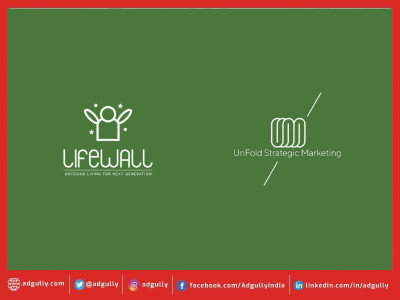Festive season 2020: How brands are strategising to spur consumer demand
Festive season is the period when brands look to shore up sales and make up for any loss or slowdown in the first half of the year. However, the year 2020 presents a different set of challenges due to the COVID-19 and lockdown conditions. While the first half of the year has been a washout, the second half, which sees the festive season in the country, is also expected to remain below par.
Also read: Marketers look at South markets to lead the festive rebound
Sandeep Goyal, Chairman, Mogae Media, opined, “I think festival celebrations this year will be more tepid, more private, and more about family. Social distancing is ensuring that no community bonding is allowed. Ganesha pandals, even the size of the murtis, have been sized down. So the gaiety, glitz and glamour will be missing this year. Over the years, festivals have become socio-religious. Now they will just be religious.”
With malls yet to open up full swing, shopping for clothes, shoes and accessories is going to be lukewarm. Gold is prohibitively expensive, crossing Rs 50,000, hence, sales are likely to suffer. On the other hand, mobile phones and IT products have seen a surge in India Unlock period.
Moreover, the lockdown has created opportunities for certain categories like consumer durables, FMCG, white goods, immunity boosters, health & hygiene products, e-commerce, with brands like Amul Panchamrit, Dabur Chyawanprash, etc., seeing great traction.
Speaking about the East market, Krishnarao S Buddha, Senior Category Head, Parle Products, said, “In a market like Bengal, where Durga Puja is really massive, shopkeepers stop buying biscuits altogether 15-20 days before Durga puja. Instead, they use that money to buy dry fruits and other stuff and then they extend their shops and display customised gifts, chocolates or dry fruits. They get more profit margin by selling that than the regular things.”
Duroflex launched their vacuum packed bed in a box, which is friendlier for the e-commerce and digital space. They are adding a lot of different categories as well, which will help the consumer during these times, one of which is the mattress protector which has anti-bacterial finishing, is easy to wash and maintain and keeps the mattress hygienic.
“This festive season will be slightly different, where it’s not about strengthening the products, but giving a lot of solutions to the consumers around other categories as well. That is not the product that consumers used to find highly attractive earlier, but during these times it’s important so that is the communication that we will do during the Onam festival in the South and during other festivals celebrated around the country as well. So, we are planning to add a lot more category, starting from August itself,” informed Smita Murarka, Vice President - Marketing & E-commerce, Duroflex.
For Pepperfry this year, sales will highlight the products and designs being created and made in the traditional woodworking hubs of India. Customers can get discounts of up to 50 per cent and also additional benefits such as cashbacks, which can be redeemed on the next purchase.
Kashyap Vadapalli, Chief Marketing Officer & Business Head, Pepperfry, said, “We launch nearly 3,000-4,000 products every year during the festive season across all our categories – furniture, décor, furnishing and lamps & lighting. Given that ‘homes’ today play a larger and more multifaceted role due to the pandemic, we are anticipating an equally elevated festive spirit from consumers. This year, too, we plan to launch a diversified range of products. Therefore, we launched “Swadeshi Sale” in August, which ran from August 4 to 16.”
Furthermore, with work from home now emerging as the new normal, customers might purchase/ upgrade their study and writing tables, ergonomic chairs and overall table decor.
According to Deepak Agarwal, CEO & Director, Bikaji Foods International, “The COVID pandemic has made the consumer more aware of safety due to which, while buying sweets, the consumers are opting more for packed sweets rather than buying loose sweets from the market. We foresee these as opportunities and hence, this year we will be focussing more on our sweets portfolio & continue with our endeavours to expand our product basket and geographies both.”
“The coronavirus outbreak has accelerated digitalisation in everyday lives. As a precautionary measure, consumers prefer online platforms for their purchases. A majority of the festive shopping this year will be for value products,” said a spokesperson from Snapdeal.
Understanding that time and safety are of essence under the current circumstances, this year companies have made further strides in e-commerce by creating more digital shopping opportunities through personalisation and gifting platforms to remain unfazed by the current situation. The seasonal offerings under the Cadbury Gifting portfolio will be available across multiple channels like e-grocers, marketplaces, e-commerce websites, hyper-local and omnichannel retailers like Swiggy, Dunzo, Ferns & Petals and IGP and many more, so that people can partake in celebrations, unhindered.
Garima Dikshit, Head of eCommerce, Mondelez India, elucidated, “Given the need of the hour, for the festive season this year, we are reconfiguring our e-commerce strategy at the back of investing in partnerships and collaborations with an array of channels to keep the festive spirit intact during this new normal. From strategic tie-ups to our Cadbury Joy Deliveries website, we are consolidating our circuit to reach retailers and consumers in the fastest and safest way possible. The idea is to remain unfazed by the current situation as we continue to meet the evolving consumer demand.”
‘Sympathy buying’ is another trend. If small businesses and/or socially responsible businesses can express themselves to the socially conscious, they can acquire a large audience base.
Kuber Chopra, Creative & Strategy Director, Rasta, observed, “Since the lockdown, friend circles are becoming smaller and tighter. It’s the safe bubble. And within safe bubbles you don’t need to establish yourself or express yourself that much, so industries like fashion that are built on helping you build a perception, will take a major hit.”
People are also looking to be more experimental with online buying, which will spur demand for quality Direct to Customer businesses that can get through to their customers.
Amit Wadhwa, President, Dentsu Impact, remarked, “I am sure some brands will figure opportunities to create or tweak their portfolio that will aid towards indoor celebrations, which I am sure will have takers. These times have shown that people have the ability and appetite to try new things and it will be nice to see how brands respond to this challenge.”
Gifting trends are set to change and brands definitely need to tap into this opportunity. For example, there will be a huge demand for gift-vouchers and brands need to start thinking of their ‘voucher strategies’.
“F&B brands, which earlier relied heavily on offline retail, will have to think less ‘on the go’ and more in the home,” added Rasta’s Kuber Chopra.
While e-commerce is expected to benefit, spending will see the same peaks. On the other hand, classic examples of industries which will suffer include auto and real estate. Srishty Chawla, Founding Partner, One Source, noted, “For the brick & mortar space, this festive season would have been ‘the’ saving grace for the Indian retail industry. But I don’t see those peaks being touched this year.”
The brands which are modelled to service in-home consumption and celebrations are likely to grow exponentially. “The only splurging that will surely happen is on food and treats in tough times. So, home deliveries may pick up for food,” said Mogae Media’s Goyal.
So, which markets will see higher spends during the festive season this year, According to Shailesh Kapoor, CEO, Ormax, “In states where the situation is in control, we may see more festivities, outdoor activities and spending. Diwali is a festival skewed towards North India, and what the COVID situation in Delhi, Uttar Pradesh, Madhya Pradesh, Rajasthan, Punjab, Haryana, etc., is like in October-November will decide the festivities level for Diwali.”


























Share
Facebook
YouTube
Tweet
Twitter
LinkedIn